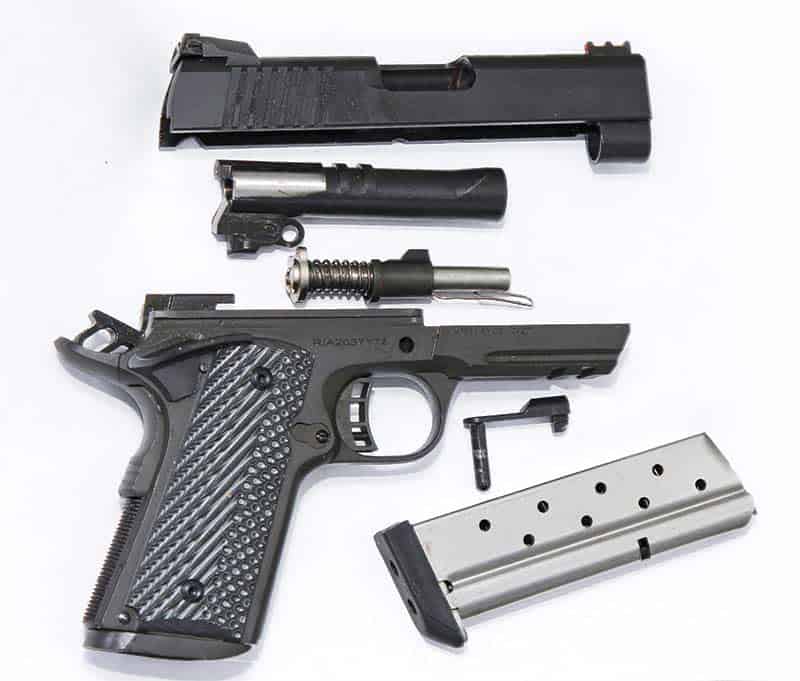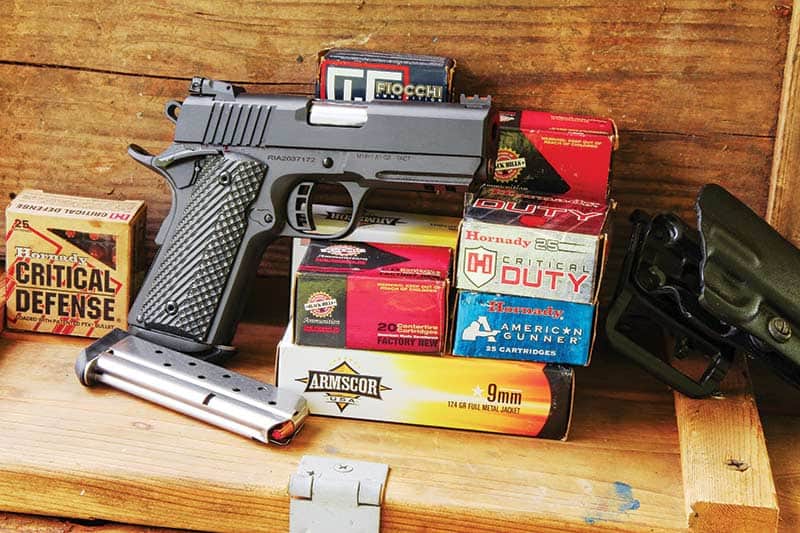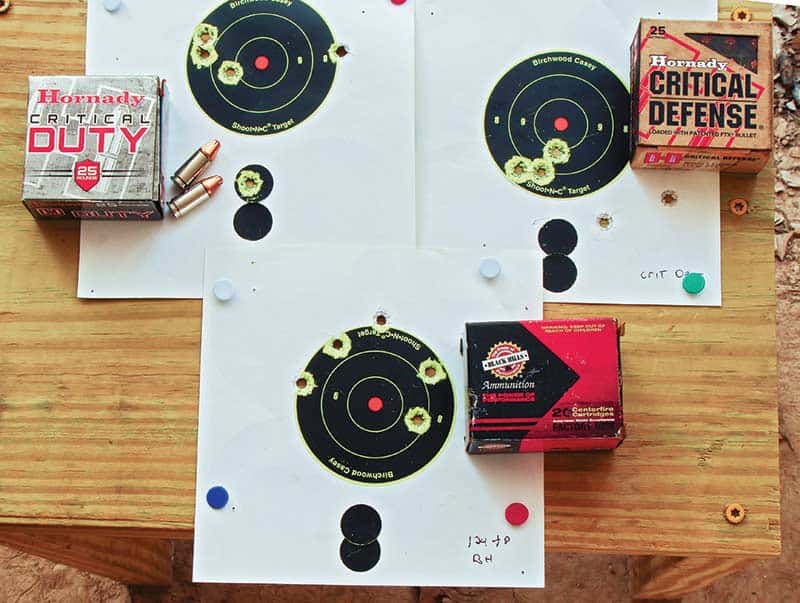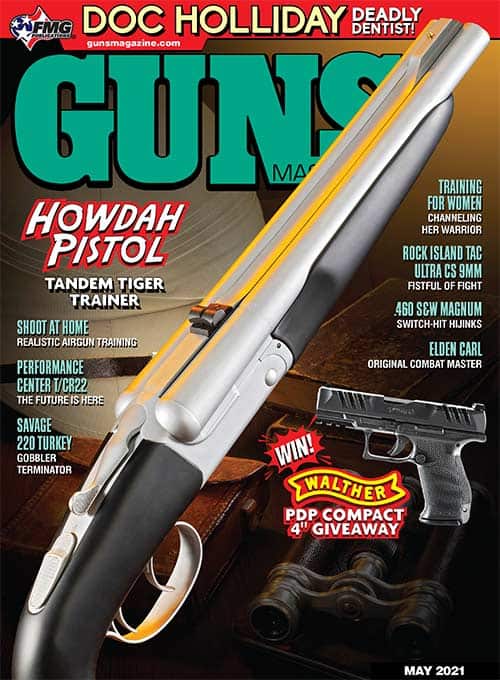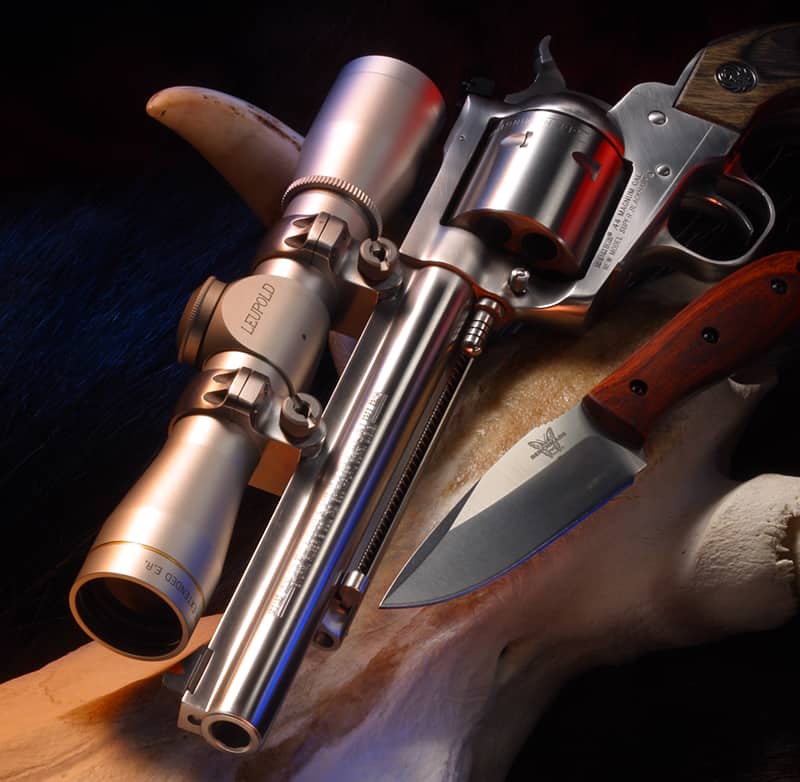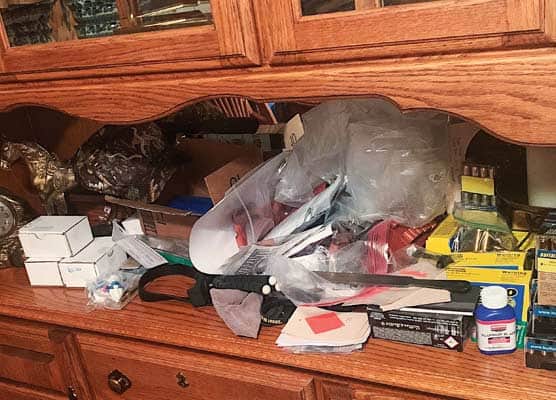Rock Island TAC
Ultra CS 9mm
A Fistful Of 9mm Fight
In the beginning there were many barriers to wrapping the 1911 platform around the 9mm cartridge. Likewise, efforts arriving at functional sub-commander-length barrels sometimes ended with the bushing and recoil spring departing the front of the slide and landing in the middle distance.
Said problems are now a distant memory and the current generation of 1911-based compact 9s rivals and sometimes surpasses the handguns actually designed around the 9mm cartridge in terms of reliability, mechanical accuracy and user-accessible hit-probability.
Further, as Faaan-tastic! as plastic really is, there is a great deal to be said in favor of metal. This is particularly true when the metal is steel and the production is a combination of Computer Numerical Control and hands-on fitting by skilled workers under the umbrella of a family-owned business. This is a significant factor when, as is the case with Armscor/Rock Island Armory, the family is dedicated to manufacturing excellence, long-term product support — and are excellent people.
Tac Ultra Compact
Major components are made from 4140 chromoly steel valued for high strength, toughness and hardenability. The coned/bushing-less bull barrel is 3.6″ opposed to the original Colt /Browning at 5″. Overall, it’s 7.1″ long by 1.3″ wide by 5.1″ tall, making it almost an inch and a half shorter than the full size 1911 and fractionally smaller in the vertical axis. Unloaded, the RIA 9×19 is 2 oz. heavier than the original 1911 and holds 8+1 fully loaded — the same as currently made .45 1911s.
The “CS” in the model designation stand for “compact” size. “TAC” stands for “Tactical” and since everything is tactical, this element requires no clarification. The pistol also wears the name “Ultra” and earns the superlative with a number of A-list features including:
• Fiber optic front sight with two-dot compact adjustable
rear made by LPA Sight company;
• Ambidextrous thumb safeties/“Series 70” (original 1911
lockwork with true half-cock notch and no firing pin block);
• Skeletonized steel trigger with over-travel adjustment
weighing 4 lbs. 6 oz. with zero take-up and overtravel;
• Textured G10 grips with checkered aluminum-alloy
main spring housing;
• Flared magazine well;
• Two 8-round magazines with bump pads;
• The frame is oversized in front for the Picatinny accessory
rail riding under a full profile dust cover/slide.
Magazines
The magazines are of the “officers model”-type with general interchangeability among the pistols of the same size. Most 1911 9mm mags employ a spacer to fit the follower and spring to the .45-size mag body. The magazines with the RIA are a significant departure. The follower and spring are actually correctly sized for 9mm and a groove in the front of the magazine shell further perfects the fit of the cartridge. Rounds do not nose-dive into the ramp and stop. The springs are quite stout, requiring considerable effort to load but the factors in play keep the cartridges firmly in place. They do not ride forward during the firing sequence as occurs with a number of 9mm pistols including several of the micros and even some high-dollar boutique pistols that should “know better.”
This phenomena causes rounds to protrude from the magazine and fall out on the ground when a partially loaded magazine is removed. They can also block ejection, shoving the empty case back into the chamber and setting up a double-feed malfunction. The mags wear the Metalform emblem under the bump pad.
Foibles
The CS 9mm utilizes a 16-lb. 13-14 coil spring captured on a full-length guide rod. Removal from the pistol is clearly outlined in the user’s manual and replacement is recommended every 800–1,000 rounds.
Finding a dedicated holster can be a challenge. The Galco Concealable is formed around the non-rail pistol but is stitched in a way allowing re-forming for a perfect fit on this railed gun. It is a short version of the holster I use regularly with full-sized 1911s. It hides well over a T-shirt and under an un-tucked sports shirt and I find it completely comfortable. The Galco Corvus is a polymer OWB rig with IWB straps included. Tuckable hardware is available.
Holsters for the wide array of mounted, lights and lasers are a custom proposition.
Shooting
My sample has a crisp 4 lb. 6 oz. trigger pull and the 36 oz. weight tilted toward the muzzle, which is a definite plus in terms of steadiness when shooting unsupported. Most 25-yard bench groups were in the 3″-and-under range. Consecutive groups with Black Hills 124-grain +P, Hornady Critical Defense and Critical Duty were 2.0″, 2.7″ and 3.0″ respectively.
Currently, the 9×19 is at the apogee on the fickle roller coaster of handgun cartridge popularity. Wonder-Bullet technology gets credit for making the nine arguably as effective as larger rounds. It has the further advantage of inexpensive ball ammo for practice (prior to the current ammo shortages).
Standard-pressure loads with 115-grain bullets clocked in the mid-to-high 1,000s from the 3.5″ RIA — 1,060 fps with Critical Defense, the Black Hills 124 +P at 1,119 fps and the SIG Elite 115-grain clocked 1,193 fps.
At 7 yards, after some practice runs, I was able to get off the first round from leather in 0.95 to just under 1.1 seconds with a second controlled round breaking at 0.23 to 0.25 second while keeping them inside the 9-ring of the B27. Nothing to write home about but faster than I really need to shoot.
My isosceles efforts are head-shot accurate at 25 yards and bracing against an upright “barrier” I can keep five rounds of the Armscor 124-grain ball ammo inside the 9-ring at 50 yards. I fired a few hundred rounds of ball and various JHP loads with 100% reliability throughout. Recoil in the relatively heavy pistol is negligible.
Final Word
The Rock Island compact is much more akin to the full-size 1911s than to the popular 9mm micro 1911 pistols in terms of overall utility. At shorter ranges, practical, shooter-accessible accuracy is virtually identical to the larger belt pistols. Practical and potential usability extends to 50 yards.
The quality of the TAC Ultra CS is on an equal footing with pistols of the same type costing considerably more. Armscor/Rock Island Armory is the World’s largest producer of 1911 Pistols and this is likely the major factor in the favorable price structure. MSRP is $786.

